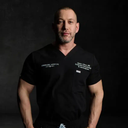Thank you for your question. You are asking how can PRP keep hair in areas where they are genetically predisposed to miniaturization. Through biopsy, you are confirmed to have androgenetic alopecia. You also indicate you have been on spironolactone.


